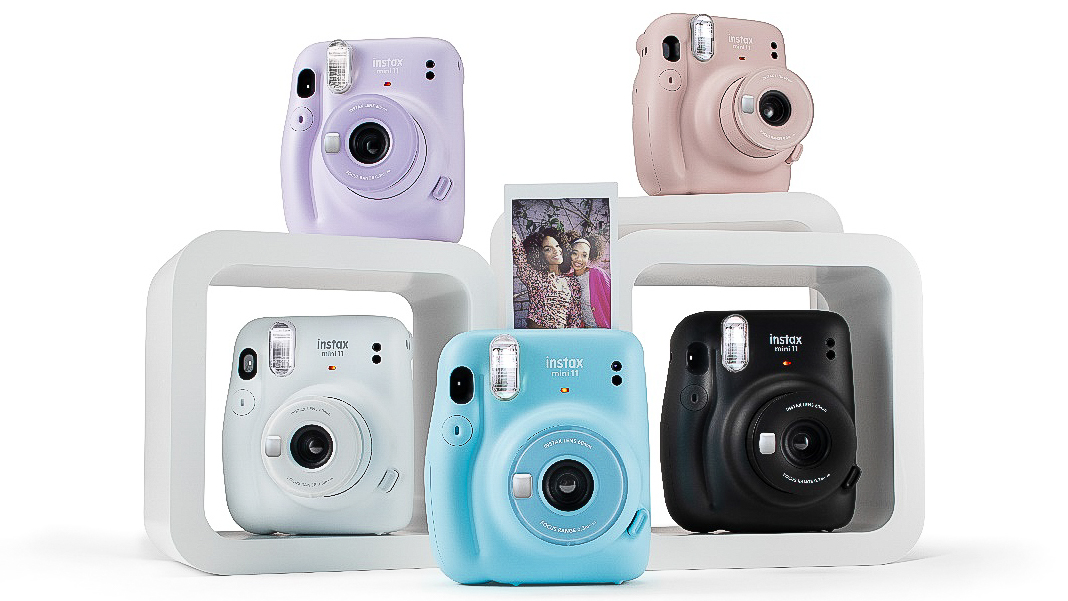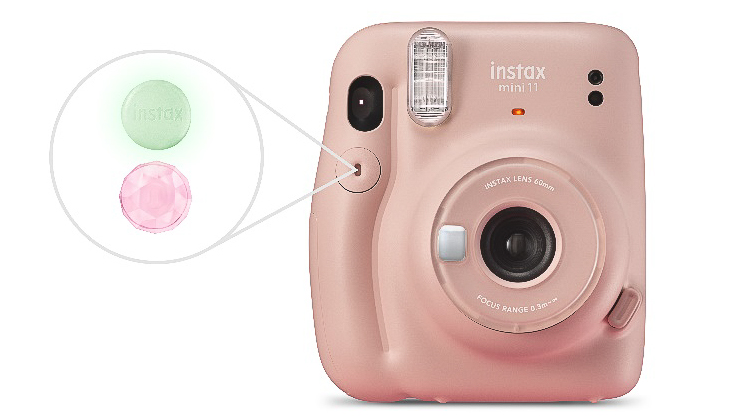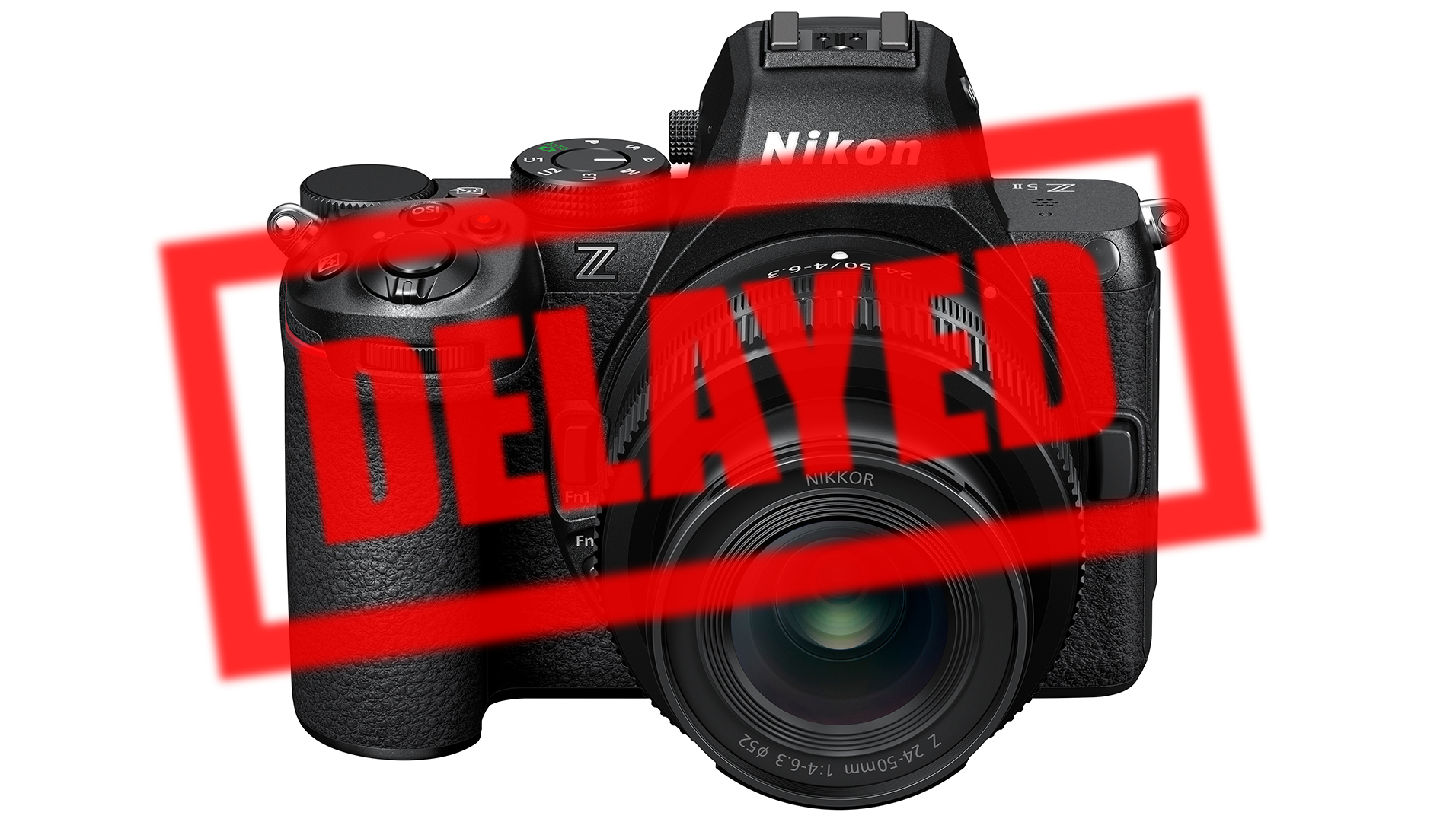Instax Mini 11 camera adds instant fun with close-up selfie shooting
Successor to the Instax Mini 9 focuses closer than before, and introduces us to the interchangeable shutter button

Fujifilm has brought another instant camera to the party with the introduction of the Instax Mini 11. Available in five different colors, has a design that is based on that of the best-selling Instax Mini 9 - but adds some new refinements to the mix.
A key new feature is a Selfie Mode that uses a built-in close-up facility in the camera to take your selfies - and using the mirror on the lens for framing. This facility decreases the minimum focusing distance of the camera from 0.5m to 0.3m, making this a useful facility for detail shots too.
Also new is an interchangeable shutter button - a pair of stickers that allow you to customize the look of your instant camera. A glow-in-the-dark shutter button, or a 'jewel' in a color to match the camera, are the two options you get. The camera also has a 'rounder, softer, modern and compact look' than the popular Instax mini 9 – as well as being about 5% smaller.
The exposure has also been improved by the addition of an auto metering system that adjusts the shutter speed. The Instax Mini 9 had a fixed shutter speed of 1/60sec, but the mini 11 offers a range from 1/2 to 1/250sec. This variable shutter speed is particularly useful with lowlight flash images – as the camera can combine a longer shutter speed to avoid ugly black backgrounds, and giving you a better view of the surroundings.

Specifications
Film type: Fujifilm instax mini instant film
Lens: 60mm
Closest focusing: 0.5m (0.3m in selfie mode)
Shutter speeds: 1/2sec - 1/250sec
Film developing time: 90 secs
Power: 2x AA batteries
Dimensions: 107.6×121.2×67.3mm
Weight: 293g (without batteries, strap, and film)
Pricing and availability
The Instax mini 11 will be available in five pastel tones – Blush Pink, Sky Blue, Charcoal Gray, Ice White, and Lilac Purple. These will go on sale from 05 March for a recommended price of $69.99 / £69.99 / AU$109.
Read more:
The best instant cameras today
Best portable printers for photos
The best camera for kids in 2020
Cheap Instax film deals
Get the Digital Camera World Newsletter
The best camera deals, reviews, product advice, and unmissable photography news, direct to your inbox!
Chris George has worked on Digital Camera World since its launch in 2017. He has been writing about photography, mobile phones, video making and technology for over 30 years – and has edited numerous magazines including PhotoPlus, N-Photo, Digital Camera, Video Camera, and Professional Photography.
His first serious camera was the iconic Olympus OM10, with which he won the title of Young Photographer of the Year - long before the advent of autofocus and memory cards. Today he uses a Nikon D800, a Fujifilm X-T1, a Sony A7, and his iPhone 15 Pro Max.
He has written about technology for countless publications and websites including The Sunday Times Magazine, The Daily Telegraph, Dorling Kindersley, What Cellphone, T3 and Techradar.

